Land Development Services Alert:
Fairfax County’s Public Facilities Manual (PFM) has transitioned to a new platform to provide an enhanced user experience: https://online.encodeplus.com/regs/fairfaxcounty-va-pfm/index.aspx.
The new location and layout of the PFM provides a more user-friendly approach to the PFM with enhanced search capabilities and links to outside web pages and documents as well as direct links to PFM tables and plates.
From the Land Development Services web page, you can still access the PFM, and PFM amendments, from two locations:
Please make any adjustments needed and update bookmarks to the PFM you have previously saved. We hope you like the new layout for accessing design details and site development guidelines for public facilities in Fairfax County.
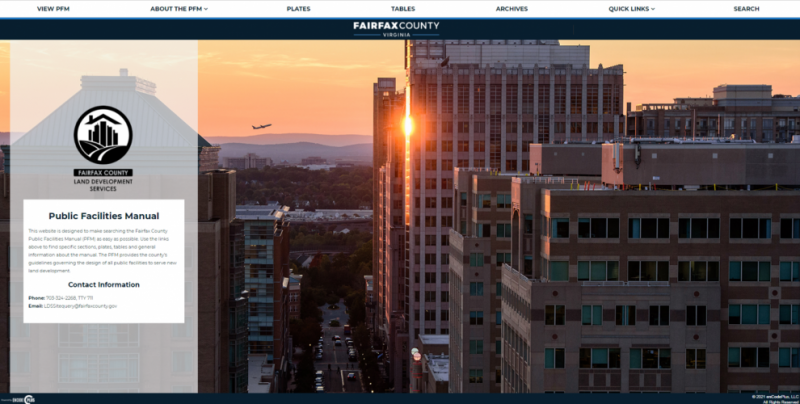
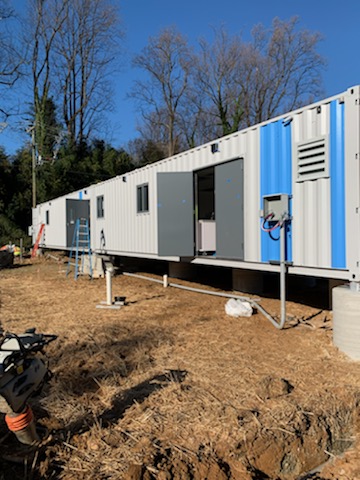 When the coronavirus pandemic reached Northern Virginia, county facilities were insufficient to meet the ongoing and future demands of a virus for a county with a population of more than 1,100,000 spread across 406 square miles. Staff at the Fairfax County Health Department knew a quick, reliable community-wide testing strategy would be critical. Attempting to “box in the virus” to prevent its spread would require more resources. Health Department staffing, equipment and space would need to be augmented – at least for the duration of COVID.
When the coronavirus pandemic reached Northern Virginia, county facilities were insufficient to meet the ongoing and future demands of a virus for a county with a population of more than 1,100,000 spread across 406 square miles. Staff at the Fairfax County Health Department knew a quick, reliable community-wide testing strategy would be critical. Attempting to “box in the virus” to prevent its spread would require more resources. Health Department staffing, equipment and space would need to be augmented – at least for the duration of COVID.
In March 2020 Health Department capacity was limited to testing 500 COVID samples daily using approved diagnostic testing methods. But staff projections showed a need to test twice that amount, or 1,000 samples per day, going into the fall 2020.
Thanks to federal CARE funding distributed by the Virginia Health Department the county had the funding to expand its resources. Health Department human resources staff put together plans to recruit and train new staff, and the Health Department Lab Director Deb Severson met with the county’s Capital Facilities staff (a division of the Department of Public Works and Environmental Services, DPWES) to put together criteria for a new medical laboratory (Lab). Every lab requires standard microbiological practices but testing for coronavirus required a Biosafety Laboratory Level 2 (BSL–2). This level of biosafety required certain specifications such as ensuring the flooring, walls and ceiling would be impermeable and seamless, have self-closing, lockable doors, have a sink and eyewash station, a dedicated supply/exhaust, 100% air exchange every 12 minutes; passthrough autoclave; self-closing doors; HEPA Air filtration, ducted air ventilation system that must sustain directional air flow, and the ability to restrict entry among other safety specifications for benchtops, cabinetry and other add ins. The new building would be 1,550 square feet and have an accessioning laboratory, restroom, administrative office and exam room.
The need was urgent, but normally locating an appropriate site or building, putting contracts together and retrofitting or renovating a space takes many months, even years, including applying for and obtaining appropriate permits. In this case, time was of the essence and the county had less than six months to spend the funding from the state.
After consultation with various county departments, including Land Development Services (LDS), it was determined a prefabricated structure could meet the requirements for a BSL-2 lab, meet additional building codes and would be the most economical and time-efficient structure to use. This would be the first structure of this kind – cargo containers – used in Fairfax County. Once the requirements were documented, the Department of Procurement and Material Management sent out a request for proposal in August.
Synergy Med Global Design Solutions, LLC, (Synergy Med) won the competitive bid to be the supplier of the new lab. (Watch a Synergy Med video about the project.)
County staff from LDS and DPWES worked closely with the designers – architects and electrical, plumbing and mechanical engineers at Synergy Med -- from the first meeting on November 13, 2020, through issuance of the building permit on December 8. The deadline for installation was December 30 due to the funding restrictions. Scott Bishop, a project manager for Building Design & Construction Division in DPWES, oversaw the entire project from start to finish including all the on-site work in Fairfax County, and Jennifer Josiah, of LDS, was the project manager, coordinating with divisions within LDS, the Department of Planning and Development, the Fire Marshal’s office and Wastewater Planning (also in DPWES) for plan review, permit issuance and inspections. It took countless virtual meetings, emails and phone calls with people across the U.S., Colorado, Minnesota and Hawaii to finalize the details and make sure every aspect of the structure was completed according to code.
Modular facilities follow a separate section of building codes than typical commercial structures such as restaurants, retail stores and office buildings. The prefabricated (or “prefab”) building Synergy Med constructed for the county started with cargo containers. But, because the containers were going to be modified and the exterior would be pierced, they had to be reviewed under the 2015 Virginia Construction Code, just like any other commercial building. This type of building is often used by the U.S. military overseas to help triage medical patients in the field.
Synergy Med built the structure in Minnesota where they are located. Inspectors from Land Development Services in Fairfax County were able to see the building being put together remotely using FaceTime and other virtual tools including a 3d video. This was important as some of the components county inspectors needed to see would be concealed behind walls before the building was delivered to Fairfax County.
 The Lab consisted of five cargo containers, so inspections had to occur on each container. The containers were transported individually and then locked together on site in Fairfax County.
The Lab consisted of five cargo containers, so inspections had to occur on each container. The containers were transported individually and then locked together on site in Fairfax County.
The Lab was loaded onto trucks in Minnesota on December 23 and arrived in Fairfax County on December 28.
After delivery, the Lab was placed on concrete piers using bolts and put together like a puzzle. Once it was deemed structurally sound and safe to enter, it was wired for the Health Department’s DIT specifications and the furniture was placed while utilities were connected, and final inspections were performed. The Non-Residential Use Permit (Non-RUP) and Certificate of Occupancy were issued for the facility on January 25, 2021, and the Health Department moved in shortly thereafter.
“This project was the result of an incredibly collaborative effort on the part of multiple agencies throughout the county. Everyone understood the urgency of the need and worked to get the lab in place as quickly and safely as possible, meeting the tight deadline for the necessary funding,” said Project Manager Jennifer Josiah.
So, a project that could take more than a year to complete was operational in under 100 days. The team met the December 30, 2020, deadline for making the Lab fully functional, and occupancy was certified by January 25, 2021. The final cost of the facility was $4,000,000.
Fairfax County has expanded by one facility, temporary maybe, but fully operational, certified safe by staff at Land Development Services and meets the state-of-the-art standards for sanitization and medical testing.
More photos of the health Lab in this slideshow.
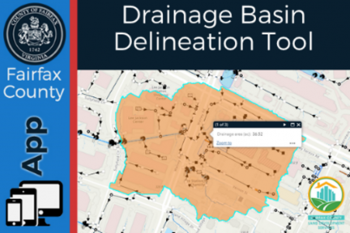 Drainage basins, or watersheds, are areas of land that drain streams and rainfall to a common outlet. This new interactive Geographic Information System (GIS) tool allows users to drop a point on a map and delineate the drainage basin anywhere in the county.
Drainage basins, or watersheds, are areas of land that drain streams and rainfall to a common outlet. This new interactive Geographic Information System (GIS) tool allows users to drop a point on a map and delineate the drainage basin anywhere in the county.
This is valuable data used by engineers to ensure the county’s stormwater management infrastructure is adequately sized. The data is also used by ecologists when evaluating relationships between land use and hydrology, their influence on stream condition, water quality and aquatic life.
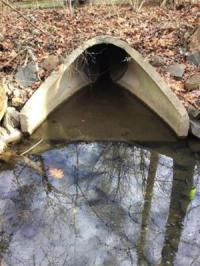 To find the drainage basin nearest you, check out the newest GIS app: Drainage Basin Delineation Tool, which uses LiDAR data (the most accurate elevation surface available), to delineate drainage basins. To learn more about watersheds, visit Watersheds | Public Works and Environmental Services.
To find the drainage basin nearest you, check out the newest GIS app: Drainage Basin Delineation Tool, which uses LiDAR data (the most accurate elevation surface available), to delineate drainage basins. To learn more about watersheds, visit Watersheds | Public Works and Environmental Services.
This is only one of many GIS applications developed by Land Development Services (LDS). To explore more LDS GIS applications please visit our LDS Mapping Applications homepage.
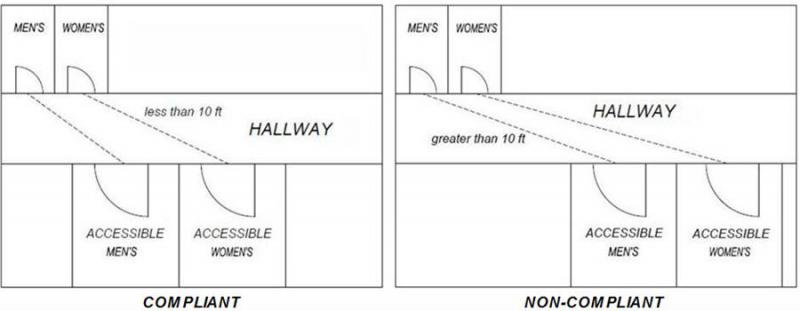
By Anurag Baral
(original publish date: Aug. 17, 2017)
If you read Section 1109.2 of the 2018 Virginia Construction Code (VCC), you are provided with location requirements for accessible restrooms. If you pay particular attention to Exception 3, you will note that while it specifies how many restrooms are to be in a cluster, it does not define the term cluster.
1109.2 Toilet and bathing facilities.
Each toilet room and bathing room shall be accessible. Where a floor level is not required to be connected by an accessible route, the only toilet rooms or bathing rooms provided within the facility shall not be located on the inaccessible floor. Except as provided for in sections 1109.2.2 through 1109.2.4, at least one of each type of fixture, element, control or dispenser in each accessible toilet room and bathing room shall be accessible.
Exceptions:
The Building Division will consider clustered toilet and bathing rooms as two or more single-occupant toilet rooms or bathing rooms, with entrance doors plainly visible from one and other, located either adjacent to each other or across the hall from each other and having a maximum travel distance of 10 feet measured from center of door to center of door of the nearest toilet/bathing room (see figures above). Please note that signage requirements of VCC Section 1111.2 still apply.
For more information, please contact Billy Farmer at 703-324-8361, TTY 711 or via email.

By Richard Grace
(original publish date: May 19, 2016)
Virginia Plumbing Code Section 403.1 dictates the minimum number of plumbing fixtures in a space based on its occupancy (function) and occupant load (maximum number of people). The building code requires the occupant load of the space to be calculated using its entire square footage, thus the number of required plumbing fixtures reflects the greatest possible occupant load. This is called simultaneous use.
However, there are some occupancies where the people may move from one area to another, but never fill the entire space at once. This is called non-simultaneous use, and it is most often seen in schools, Group E. Children are rarely in a classroom and auditorium at the same time, so why should unnecessary plumbing fixtures be required? Rooms such as the auditorium and gymnasium are generally for after-school activities rather than simultaneously used during school hours.
Unfortunately the code does not recognize this concept; however, Fairfax County will permit non-simultaneous use in Group E only. To determine the required number of fixtures, use the larger occupant load calculated from the following room combinations:
This is a reasonable approach that maintains the spirit and intent of the plumbing code while reducing the costs related to potential redundant fixtures.
Non-simultaneous use is permitted only with the permission of the Fairfax County Building Official through the code modification process. Learn more about code modifications and submission requirements.
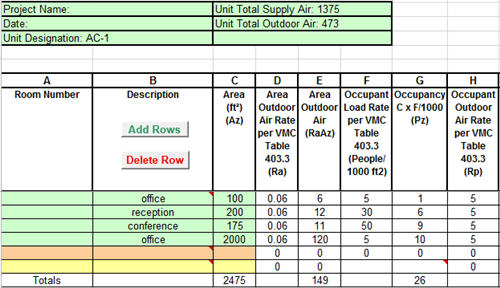
By Aaron Morgan and Jay Riat
(original publish date: July 7, 2016)
Every occupied space of a building must be ventilated naturally or mechanically. If choosing mechanical means, the minimum outdoor airflow rate of the HVAC system must be calculated in accordance to Section 403.3 of the Virginia Mechanical Code. Because the tables and formulas can be fairly complex and time consuming, the county has developed a spreadsheet/form with self-populating cells that automate the calculation. You may contact us to request a copy of the spreadsheet/form to be emailed to you.
Using the spreadsheet/form provides design compliance and consistency which will reduce mechanical review times and the overall permit process. Designers should complete and print the spreadsheet/form and attach it to each set of construction documents submitted to the county during permit application.
Helpful hints for using the spreadsheet/form:
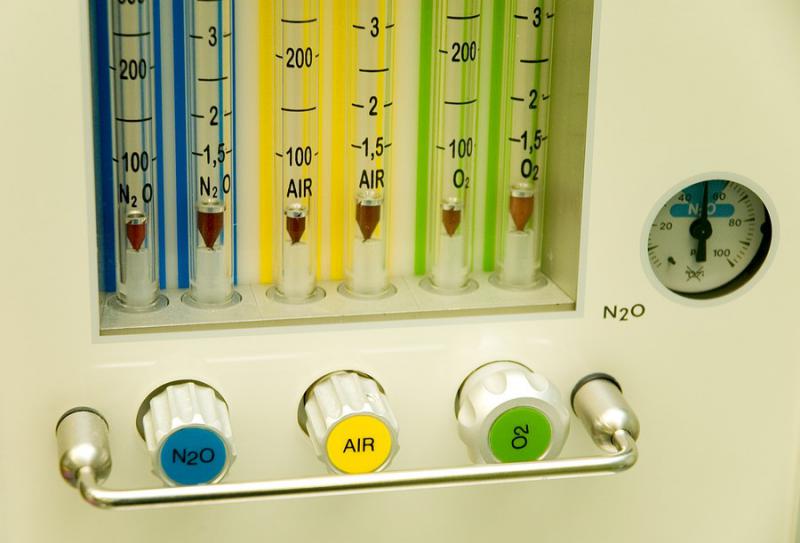
By Aaron Morgan
(original publish date: Sept. 10, 2018)
Medical gas systems in healthcare facilities such as dental offices, outpatient surgery centers and hospitals are a lifesaving and critical element of patient care. Because these gases are so vital, proper installation is extremely important. Faulty medical gas installations can result in hazardous situations for patients. One of the demanding responsibilities of the Building Division is to ensure code compliance with the design and installation of these systems.
To ensure proper design, plan sheets for medical gas installations are required to be separate from other trades. Plan review staff will verify the proposed scope of work and installation meet the requirements of the applicable standard, NFPA 99.
To ensure proper installation, evidence of the installer being certified to the ASSE Series 6,000 standard must be provided at permit application; permits will not be issued otherwise. During the inspection process, county field staff will verify the installer’s certification as well and inspect field conditions for compliance with NFPA 99. It is important to note that certified installers cannot employ non-certified personnel.
If you have any questions regarding medical gas, the Building Division can provide the necessary information for safe and compliant installation. Remember, knowing the requirements prior to installation will be a lifesaver for you and future patients in these facilities.

By Battalion Chief John L. Walser
While it is entirely too early to know what caused the fire at the Notre-Dame Cathedral, it is a stark reminder of the fire hazards in buildings under construction or renovation.
Several fires involving large wooden buildings under construction have occurred in recent years. However, there are fire hazards at all construction types, regardless of the type of construction materials.
Buildings under construction, or being renovated, present a higher risk to damage from fire. Significant reasons for this higher risk:
What are the best practices that can prevent, or at least minimize the damage from fire? Several considerations to protect a building under construction are:
NFPA 241, Standard for Safeguarding Construction, Alteration, and Demolition Operations provides detailed guidance on best practices that can be employed at construction sites. Compliance with this document is not optional and is a requirement in Virginia. This document provides a template to help manage and mitigate risk from fire.
These are a few of the considerations for when a building is under construction or alteration. Simple measures and adherence to safety procedures may prevent a devastating loss from fire and limit risk of injury and death to workers, civilians and firefighters.
For additional questions please contact the Fairfax County Fire Prevention Division, 703-246-4800, TTY 711.
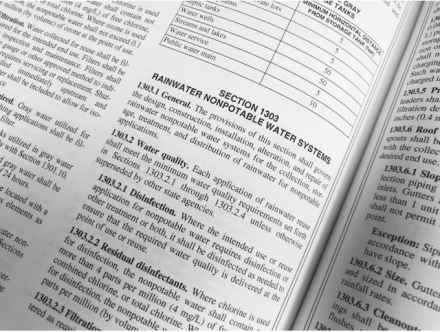
By Richard Grace
In early 2018, the Canadian Standards Association (CSA) in conjunction with the International Code Council (ICC) produced a national standard, CSA B805-18/ICC 805-2018, that could be used to assist in the design for rainwater harvesting systems. This standard has been accepted by reference in the 2021 International Plumbing Code for non-potable water system use. It provides prescriptive and performance requirements and includes provisions for multiple collection surfaces and various end uses.
For larger commercial and multifamily buildings that may have problems complying with minimum rainwater provisions in the Virginia Plumbing Code, designers may submit a request to utilize this alternative method with their proposed rainwater harvesting system. If designing to the CSA B805-18/ICC 805-2018 standard, the designer must clearly show how the proposed system complies with the requirements of the chosen compliance path defined in the standard.
New amendment to the Public Facilities Manual allows administrative waivers of previously mandatory provisions
Recently, the Fairfax County Board of Supervisors approved an amendment to the Public Facilities Manual (PFM) that provides greater flexibility during the site development review process, and allows innovative ideas to solve engineering problems without a lengthy legislative process.
Previously, if a provision in the PFM used the words “must” or “shall,” it was a mandatory minimum requirement and could not be waived. Now, if the request meets certain conditions and is not mandated by other law, the Director of Land Development Services can waive these previously mandatory provisions.
In practice, this means that county staff can use their professional judgement when the realities of a development project make it difficult to follow the PFM. This increased flexibility can help shorten the development review process and allows sensible designs to improve the finished product, while still protecting the community and the environment. This change is part of the county’s efforts to return the PFM to its original intent as a guidance document.
To take advantage of this new flexibility, the waiver request must meet the following conditions:
In addition, any waivers or alternative designs must comply with specific requirements of the Virginia Code, County Code, and other applicable regulations, such as specific standards of the Virginia Department of Transportation and other reviewing agencies, from which variances may not be granted at the local level.
To take request a waiver, customers should use the current waiver application form. More improvements to the PFM are underway through the PFM Flexibility Project.